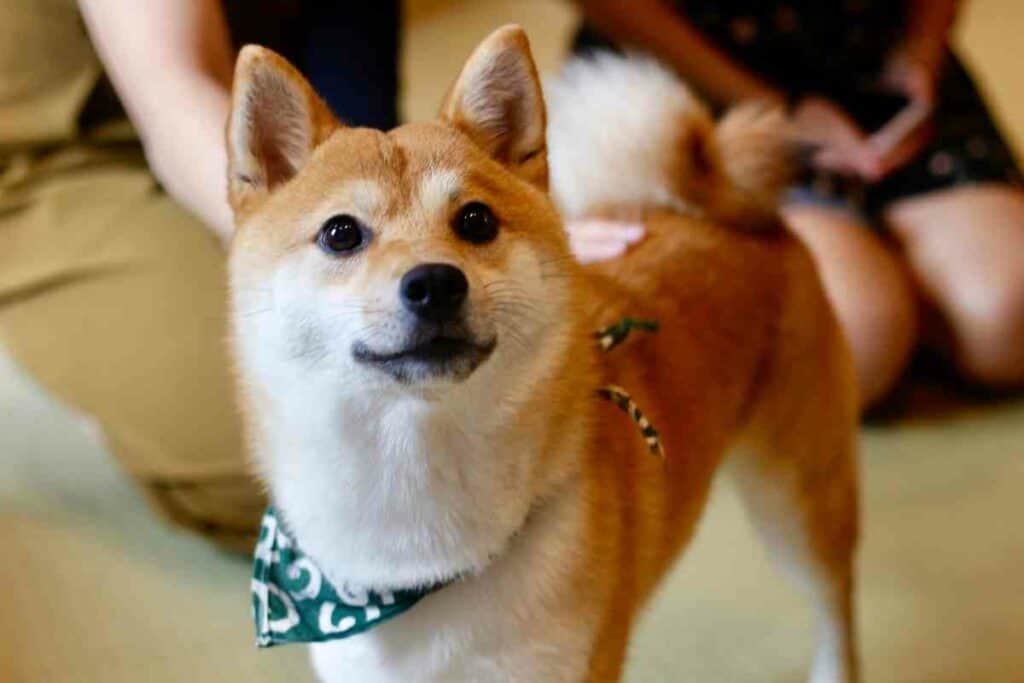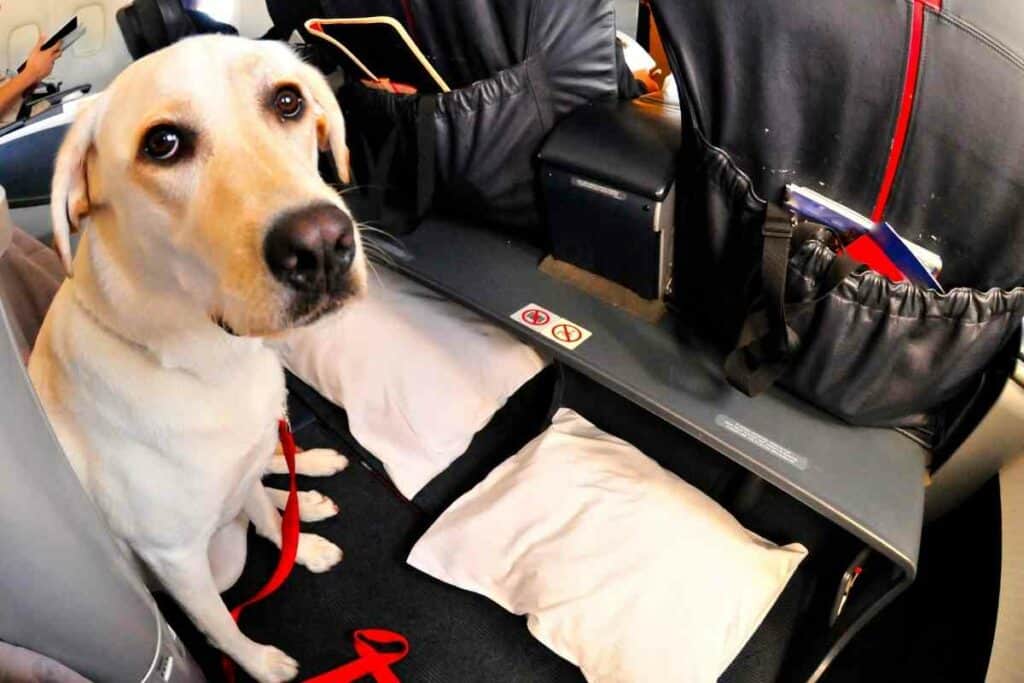If you’re used to owning a pet and seeing pets around your neighborhood, you might be very surprised by how things are in Japan.
A lot of this is because Japan largely makes it difficult to own a pet – the homes are smaller and there are different housing rules.

Here are a few reasons why Japan is not dog-friendly and why it’s not particularly pet-friendly at all.
Apartment buildings often don’t allow pets
It’s very difficult to find somewhere to live that allows a pet.
This is especially difficult in a large city such as Tokyo.
It could be that the reason why Japan is not dog-friendly according to ex-pats is that they often choose to live in large cities when they come to the country.

The reason for the ban is that pets can be noisy, and apartments are often crammed together.
What’s more, they cause damage and landlords want to avoid unnecessary repairs.
Can you find pet-friendly housing?
It is possible to find a place to live that allows pets but they’re not easy to find.
When you do find one, however, you’ll notice a difference compared to other countries.
For Example – Pet-friendly apartments tend to have leash hooks close to the door as well as foot baths for washing your dog’s dirty paws after a walk.
When looking for a pet-friendly place to live, you’ll need to look out for petto ka -ペット可. This means “pet ok.”
Homes don’t have gardens
Another reason why Japan is not dog-friendly or pet-friendly is that it’s very rare for a home to have a garden.
Even when a yard is present, it’s usually incredibly tiny.

Japan is a pretty small country in terms of land size, but it has a lot of people living there. This means that everyone lives in small spaces close together.
For anyone that does have a dog or cat and no yard, the Japanese use potty pads.
These are odor-blocking absorbent pads that can be placed on a balcony or even inside the home where a pet can go to the bathroom.
Size matters
This lack of outdoor space and the size of the homes combined also makes it difficult to own a pet.
Pets, especially dogs, need exercise and they simply can’t get it in a small home without a yard.
However, when people do own dogs, there are lots of activities and toys that people buy to keep them entertained.
Cats are usually happy if they’ve got something to climb up – especially if it allows them to see out of the apartment window.
Read Next ?
What about immigration if you’re bringing a pet to Japan?
If you’re hoping to bring a pet to Japan or you want to leave Japan with a pet acquired whilst here, there are steps to go through.
It’s essential to check the immigration laws and all of the procedures before you book your flight.

Pets coming into Japan must be microchipped.
They will also need to have documentation like licensing, blood tests, and vaccine documentation.
This can be a long and tiresome process so it’s important to be organized in plenty of time.
Choosing a pet in Japan? Check out your options
There are lots of pet stores in Japan.
You’ll find them in all shopping malls, and they’ll be awash with the cutest kittens and puppies.
These pet stores usually only cater to trendy and popular breeds.
If you are keen on an older pet or want something not as expensive, you’ll need to avoid these places and look for an organization or a breeder yourself.
More reasons why Japan is not pet-friendly
Around 200 animals are sent to shelters each day in Japan.
This figure is alarming – especially when you consider that 80% of these will be gassed each year.

The idea of having a cute, trendy cat or dog is great – and that’s why you’ll see so many pet stores in the shopping malls.
However, the reality of having a pet in an apartment is not so great, which means many of these animals end up in a shelter.
What’s More – Vets aren’t generally pro neutering and spaying animals, which causes additional problems too.
Japanese pet trends
In the 1960s and 1970s in Japan, the ‘my home’ movement happened.
This trend brought out the idea that a home wasn’t complete without a dog and a garden.
This saw many Japanese people choosing Shiba Inu or Akita breeds – those native to the country. Cats didn’t become popular until much later.

The film Antarctica in 1983 also meant there was a surge in pet ownership.
This Japanese film featured 17 huskies and so, many families clamored to get one. However, many then regretted their decision and returned them or discarded them somewhere.
More Recently – There has been an increase in interest in smaller dog breeds. In fact, the ‘cuteness’ of smaller dogs is said to be popular due to the Kawaii culture.
This has meant that breeders have chosen to keep the runts and breed them to keep smaller animals.
We’ve seen Dachshunds get longer, poodles get smaller, and chihuahuas get daintier.
While these smaller sizes have increased sales of these dogs, they’ve also caused or exacerbated painful medical conditions.
When dogs are smaller, females struggle to give birth naturally and require cesareans.
Some breeders force females to go through this five times before disposing of them when they’re no longer useful.

What’s more, the fashions for dogs rarely last long before another breed takes over.
Towards the end of the 1990s, there was an increase in dalmatians due to Disney. The newest popular pooch is the top poodle. In particular, the apricot toy poodle.
There’s also been an increasing trend in pet cafes in Japan. Not just with cats and dogs but exotic animals too like owls, rabbits and even hedgehogs.
Japan’s problem with animal shelters
In 2014, an animal rights group called Tokyo Zero estimated that over 310,000 cats and dogs were gassed in Japanese animal shelters that year.

Most people agree that over 80% of animals in shelters are put down and only around 11% are adopted. The missing percentage are sent to labs or pet shops.
Why are these culling rates so high?
It’s all down to overcrowding. Once an animal arrives in a shelter, it has a few days to a week to be adopted before its fate is decided.
Why Japan is not pet-friendly
So, as we’ve seen, there are many reasons why Japan is not dog-friendly or pet-friendly.

Here is a summary:
- It’s hard to have pets due to many apartments not allowing them.
- Even if you are allowed pets in an apartment, the fact you don’t have outdoor space means it’s difficult to keep them.
- Pets are available to buy in malls – even dogs and cats. If you come from a country where things like this are heavily regulated, you’ll see why this could be a sign that the country isn’t pet-friendly.
- Pet trends change quickly in Japan and people often seek ‘cuteness’ in line with the Kawaii culture. This means runts are often bred to create super tiny versions, which then suffer.
- A huge number of pets are sent to shelters each day when people get bored of them and over 80% of these are culled.
Final Thoughts
All in all, Japan isn’t a pet-friendly country.
Do they hate small pets in Japan? Absolutely not.
But they’re often a trend that lasts a couple of years before the next cute breed comes along. That doesn’t mean that you can’t have a pet there yourself, you absolutely can.
But you’ll need to respect rules around apartments and immigration, etc. if you’re bringing your pet from abroad as an ex-pat.
- 12 Things Tourists Should NEVER Say in Japan
- Kissing Robot: Exploring the Popularity of the Chinese Kissing App
- Unlocking the Secret Dating Rituals Only Locals Know in Japan
- Samurai Armor: Ancient Protection for Japan’s Elite Warriors
- 10 Amazing Facts About Schools in Japan: Unique Traditions and Educational Practices
- Where can you see snow monkeys in Japan: Best locations and viewing tips









